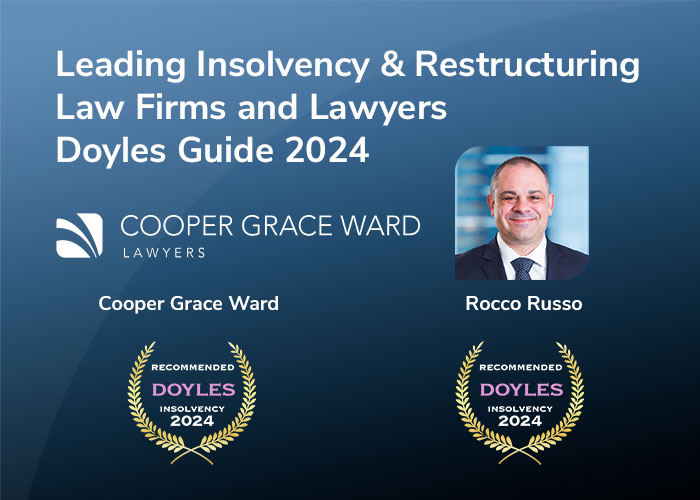Recent amendments to the 1936 Tax Act mean the ATO now has more ammunition to fight anti-avoidance cases. Treasury estimates that the changes will prevent the loss of $1 billion in tax revenue each year.
The changes were prompted by the Commissioner losing a string of high profile cases, explained in our previous legal alert Anti-avoidance rule changes on the horizon. When Part IVA was first introduced, it was never intended to compel taxpayers to pay the greatest amount of tax possible. It was designed to counter artificial or contrived arrangements.
However, the amendments in the Tax Laws Amendment (Countering Tax Avoidance and Multi National Profit Shifting) Bill 2013 give the ATO wide powers to reconstruct what actually happened to cancel any tax benefit. For small to medium enterprises and individuals, the risk is that sensible tax planning may now be caught in the anti-avoidance provisions.
How does Part IVA work?
The underlying elements of Part IVA remain the same.
- There must be a ‘scheme’ in relation to a transaction. This requirement will almost always be satisfied because the concept of a ‘scheme’ is defined very widely.
- The taxpayer must get a ‘tax benefit’. Under the previous legislation this required the court to consider what the taxpayer would have done if they had not entered into the scheme and whether they would have paid more tax under that alternative scenario.
- The taxpayer’s sole or dominant purpose in entering the scheme must be to obtain a tax benefit.
What has changed?
Sole or dominant purpose
The amendments require the taxpayer’s purpose to be considered at the same time as considering whether a tax benefit exists, even if the ATO cannot identify an alternative scenario.
Tax benefit
Part IVA is based on a comparison of what actually happened (the scheme) and what would have happened without the scheme (alternate postulate).
The Commissioner lost a number of cases because the Court found that, if the taxpayer had not entered into the scheme they may not have done anything at all and therefore there was no alternate postulate. This meant there could be no ‘tax benefit’ as this requires a comparison with tax that would have been paid under the alternate postulate.
As there was no tax benefit there was no need to examine the taxpayer’s purpose.
Under the amended law, the Commissioner must determine that, except for the scheme, either:
- no tax benefit would have arisen; or
- no tax benefit might reasonably have been expected to have arisen.
The amendments will not affect a basic anti-avoidance case where a taxpayer has entered into a scheme to obtain a tax benefit. The explanatory memorandum gives the following example:
Sandy enters into a scheme from which he secures a large, up front, tax deduction. The scheme is structured so as to provide him with a highly contingent right to income payable some years in the future. The potential investment returns are speculative and clearly subordinate to the tax deduction.
When postulating what the tax effects would have been absent the scheme, the events and circumstances comprising the scheme must be assumed not to have happened, and it is impermissible to speculate about events or circumstances that did not exist (for example, that Sandy would have done something else that would have also secured a tax deduction).
If the scheme is assumed not to have happened, Sandy would not have obtained a tax deduction. Sandy has therefore obtained a tax benefit in connection with the scheme that is equal to the amount of the tax deduction that he secured by entering into the scheme.
However, the amendments create substantial uncertainty where the Commissioner considers that, except for the scheme, something would have happened but in a different manner.
The crux of the problem with these amendments is that the alternate postulate must be reasonable, but in determining what a reasonable alternative is, the Commissioner must not consider tax consequences.
For example, in RCI Pty Ltd v Commissioner of Taxation, a dividend paid in the process of an internal restructure of the James Hardie group reduced the value of a capital gain, resulting in a tax cost saving of approximately $172m. RCI’s evidence was that it would not have restructured if it meant incurring a tax cost of $172m.
The amended provisions would give the Commissioner a much stronger argument in cases similar to RCI. Applying the amended provisions, the tax costs must be disregarded in considering whether something is an acceptable alternative. In that case, the alternate postulate would be that the restructure goes ahead in a manner that generates a $172m tax bill.
The amendments also allow for steps within a transaction to be identified as being taken for the sole or dominant purpose of obtaining a tax benefit.
What do you need to do?
The amendments are counterintuitive for taxpayers who are used to considering tax costs, along with other costs, in making sensible business decisions.
It is important to ensure commercial, family or other factors motivating a decision are properly documented.







